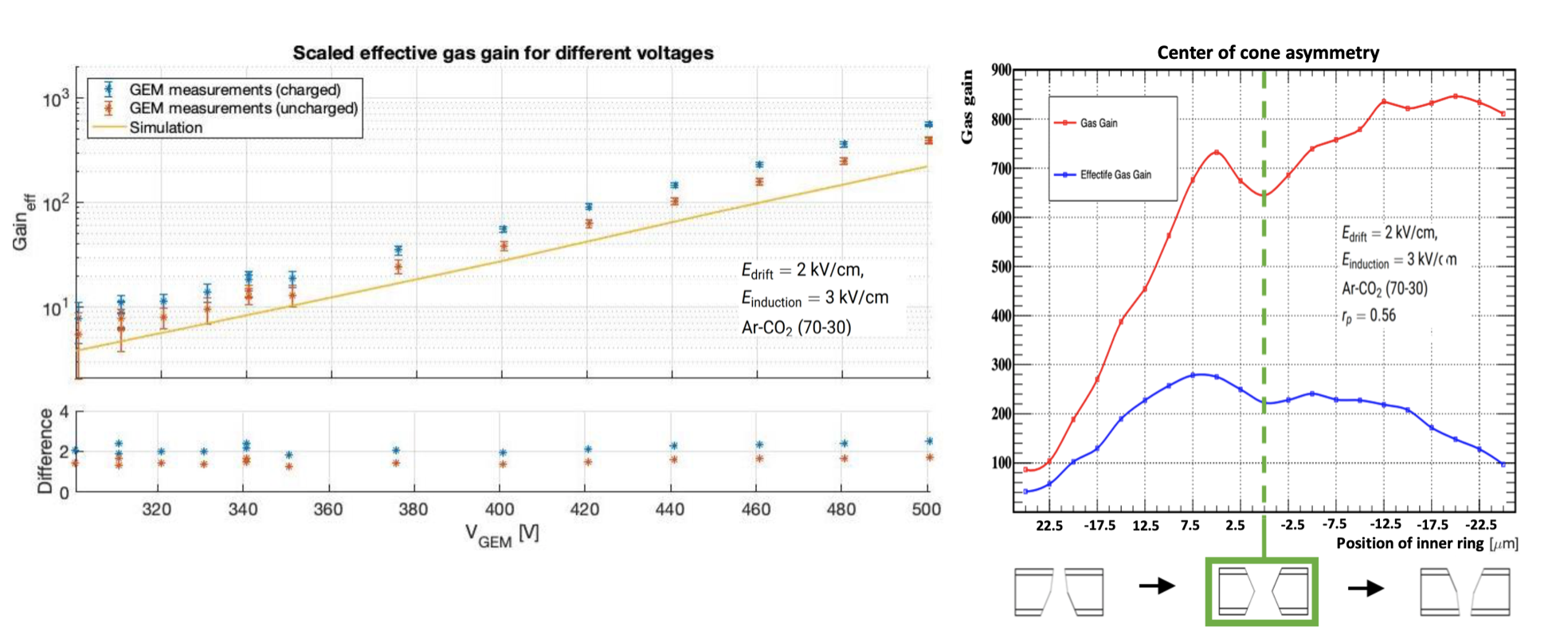Comparison of simulated and experimental GEM gain factors
One of our summer students worked on the longstanding question why the measured and calculated gain in GEM detectors differ by a factor of 2. Simulations generally assume symmetric GEM holes, but J. Merlin had already found that there is a difference in gain of a factor 3.6 between the two orientations of triple single-mask GEMs. This factor corresponds to a factor of 1.55 only for a single GEM.
The effect of surface charge on the gain was measured and found too small to explain the discrepancy. Also the surface currents and resulting potential distortions have little effect. Likewise, the Penning effect, although significant is not the cause. A known flaw of the Garfield++ microscopic tracking algorithm for electrons, the assumption that the trajectory of electrons between collisions is straight even in non-uniform fields, was corrected. But this again did not explain the discrepancy. Secondary electron emission is not responsible for the extra electrons either because avalanche electrons do not reach sufficient energies. And finally, a systematic scan of hole asymmetries showed that only improbable deformations lead to sufficient changes in the gain.
There is therefore no single cause, but the various effects combined may well be the explanation.

